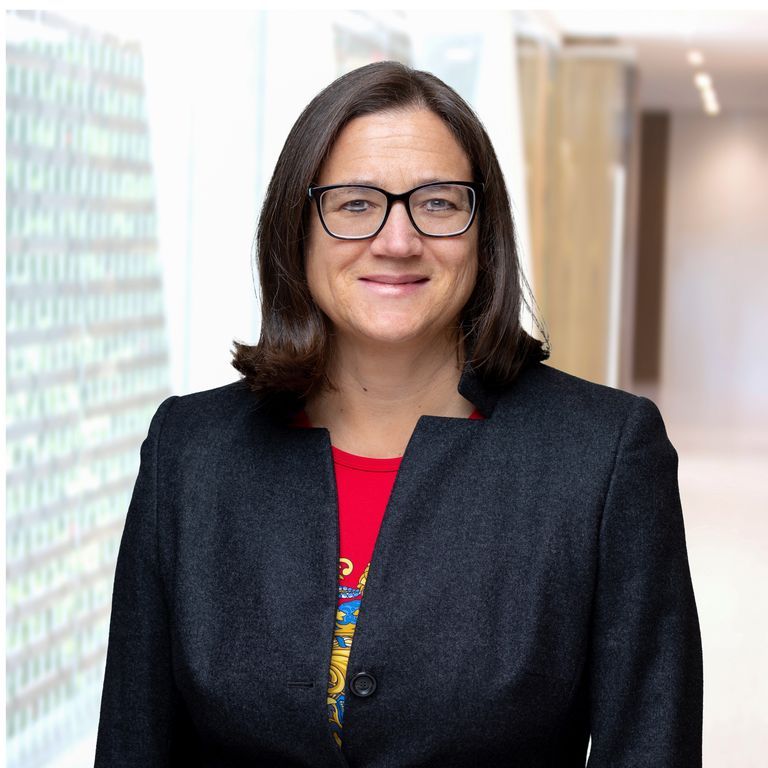Overview
Disagreement over whether the Broadview Solar facility should or should not be a QF has now lasted over five years and has been the subject of many past blog posts. The DC Circuit has now issued its second opinion on the topic, but it remains to be seen if the 2-1 opinion will be the final word. In SEIA v. FERC, a majority of the D.C. Circuit panel one again upheld FERC's decision to classify the solar facility's "power production capacity" under PURPA as the "amount of electric power that is transmitted from the facility to the grid for customer use—its 'send out.'" The court explained: "In the simplest terms, the net output equals the amount of electric power that is transmitted from the facility to the grid for customer use—its 'send out.'" The decision follows a remand from the Supreme Court under Loper Bright, which directed the D.C. Circuit to re-evaluate the case without applying Chevron deference.
The majority opinion took a "fresh look" at the facility's characteristics to determine the statutory meaning of power production capacity. The nameplate capacity of the facility components was 160 MW direct current (DC) for the solar array and 50 MW DC for the batteries. However, the amount of power the combined facility could actually transmit to the grid was limited by inverters to 80 MW alternating current (AC). In its ruling, the majority interpreted "power production capacity" to mean the maximum amount of usable power available to be delivered to the grid, reasoning that this interpretation aligns with the facility's interconnected operations and the ultimate form in which electricity is sold. The court further found that the most natural reading of the concept of the "power production capacity" of a "facility" is one that permits all the subcomponents to "work together to provide usable power." The court emphasized PURPA's goal of supporting small-scale renewable energy projects and pointed to FERC's consistent 44-year practice of defining "capacity" based on the power transmitted to the grid. Based on these considerations, the majority concluded that the facility did not exceed PURPA's 80 MW capacity threshold.
The majority rejected the dissent's argument that it should add the 50 MW of DC power that could be delivered to and stored by the battery at the same time 80 MW of inverted AC power could be delivered to the grid to bring the facility's total power production capacity to 130 MW, claiming that its reading was superior. The majority also affirmed FERC's rejection of Petitioners' argument concerning conflating power production capacity with transmission capacity, by finding that the concepts could overlap and had a "close relationship."
Judge Walker dissented. He did agree with the majority that the 160-MW solar array had to be considered in light of the inverters that limited the array's AC output. But he argued that the facility did not qualify as a PURPA facility because it could produce up to 130 MW of useful power simultaneously, 50 MW (DC) used by the battery and 80 MW (AC) sent to the grid. The dissent asserted that the statutory term "facility" should encompass all components capable of generating useful power and that PURPA's language unambiguously refers to the total production capacity of the facility. The dissent analyzed the statutory language by defining "power" as any source of energy, "production" as generation for any purpose, and "capacity" as the maximum potential output of the facility. Based on this interpretation, the dissent concluded that the facility exceeded PURPA's 80 MW capacity threshold.
The dissent pointed out several specific flaws in the majority's reasoning. It noted that the relevant act referenced "power production capacity," not "AC power production capacity." And, the dissent observed that the majority was ignoring the DC production capacity that could charge the battery. Additionally, Judge Walker noted that the majority insisted that "capacity" includes only the power that a facility supplies to the electric grid, but that interpretation changes the term "power production capacity" to "power delivery capacity," two terms with different meanings. The dissent also relied on a concession FERC made at oral argument. FERC conceded that "power production capacity" would likely include power never delivered to the grid if it was used "on site" for a "useful" purpose, like powering an on-site factory. This point could be rather important given that it is fairly common for QFs to serve on-site retail load, if state law permits and may be litigated in the future.
The dissent also expressed non-textual concerns about the case, noting that PURPA often forces utilities to purchase power at above-market prices, even when that power is unnecessary. The dissent highlighted the scale of the facility under review, arguing that despite its segmented design, it resembled a larger-scale operation inconsistent with the small-scale renewable facilities PURPA was intended to promote.
If not for the dissent, this blog post might be the last post on the status of Broadview Solar. But whether that will be the case is not yet known. What could be most interesting is if the case is taken up en banc to the full circuit or to the Supreme Court, would the federal government actually support the decision? It was a Republican-majority Commission that reached the opposite conclusion as to Broadview's QF status, finding it exceeded 80 MW. The immediate case was briefed before Trump took office and was argued after Trump took office; but, there has not been a Republican majority on the Commission since the time the case was remanded by the Supreme Court.




